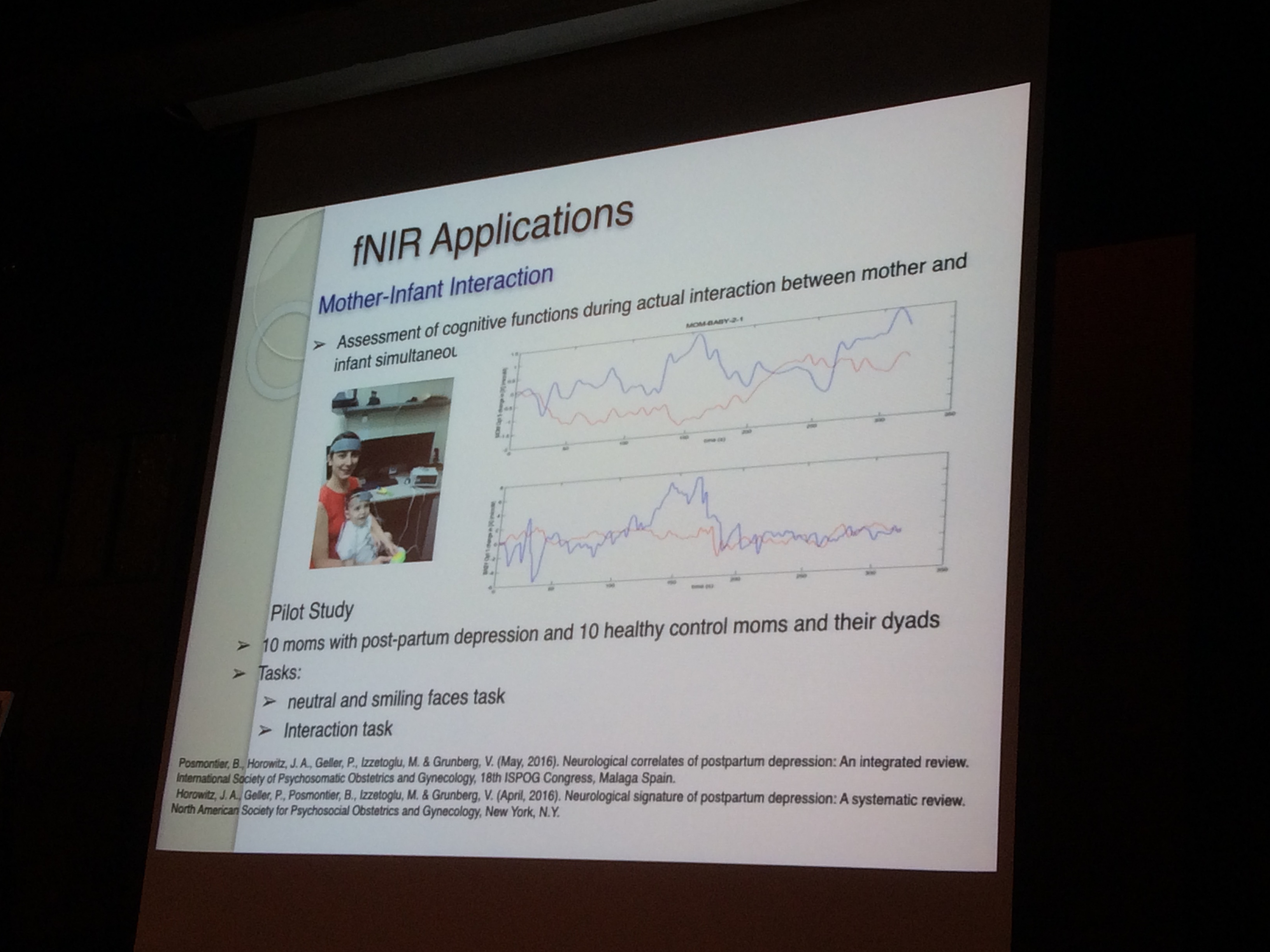The Department of Physics Colloquium Series continued on Monday November 7th with a presentation by Dr. Meltem Izzetoglu of Drexel University School of Biomedical Engineering on “Functional Optical Brain Monitoring: Principles and Applications.” Dr. Izzetoglu spoke about an emerging neuroimaging technology called functional near-infrared spectroscopy (fNIRs) and its applications to detecting anything from fatigue and awareness in critical jobs like pilots to learning disabilities in children. Dr. Izzetoglu was born and raised in Turkey and received her undergraduate degree in electrical engineering. In search for more practical applications of her very theoretical background, she came to the US in 1996 to pursue a Ph.D in electrical and computer engineering at Drexel University. Since then, she has been in the biomedical engineering department developing a device that use optics to image the human body, mainly the human brain. She is also interested in tracking changes in hemoglobin content in the brain.
Dr. Izzetoglu was born and raised in Turkey and received her undergraduate degree in electrical engineering. In search for more practical applications of her very theoretical background, she came to the US in 1996 to pursue a Ph.D in electrical and computer engineering at Drexel University. Since then, she has been in the biomedical engineering department developing a device that use optics to image the human body, mainly the human brain. She is also interested in tracking changes in hemoglobin content in the brain.
Dr. Izzetoglu’s main interest in developing the device was to make brain monitoring technology more affordable, accessible, safe, portable, etc. Current models such as fMRI and EEG are too expensive and take too long to complete the data collection process. Another drawback of fMRI technology is that the patient must remain still for 30 minutes — a task very difficult for babies and young children. The device Izzetoglu’s team of engineers, clinicians, doctors, statisticians, psychologists, and neuroscientists designed is comparable to a “fit bit for the brain.” Using LEDs mounted onto a flexible circuit board covered with silicon material headband, a light wave within the optical window of tissue penetration (700-900nm) is directed into the brain (tissue is 75% water and diffuses light). The device then measures how that beam of light refracts after it reaches the tissue. Different oxygenation/deoxygenation of hemoglobin tissue patterns reflect fatigue, pain, learning, and training because neurons need oxygen to fire and to metabolize glucose. Izzetoglu’s team hopes this technology can be used to monitor those in high risk and critical jobs like pilots, emergency workers, air traffic controllers, doctor residents, astronauts, and more. In fact, a large portion of funding for the project is already provided by the Army and the Department of Defense.
“Our body conducts and generates electric signals.”
Future goals of this emerging technology are to be able to operate the device from a smartphone, to integrate the data with virtual/augmented reality technology, and to apply this technology to other populations such as detecting learning disabilities and mental cognition in the elderly. Dr. Izzetoglu and her team are dismantling the one size fits all model of brain activity and personal strengths and challenges us to come up with individualized human performance models.

